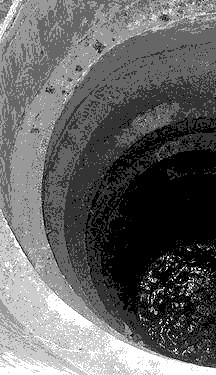Deepest wells can be contaminated
 Research has shown that the groundwater at the bottom of the deepest wells is still vulnerable to contamination.
Research has shown that the groundwater at the bottom of the deepest wells is still vulnerable to contamination.
Billions of people rely on groundwater for drinking water and irrigation.
Some of this groundwater is young and easily affected by pollution and changes in climate, but much more groundwater has been stored beneath the Earth’s surface for many thousands of years.
Older, deeper groundwater is more difficult to sustainably harvest, but it is largely protected from climate variability and — it had been widely assumed — immune to contamination from human activity.
Canadian researchers have assessed groundwater from over 6,000 wells around the globe.
They found that so-called ‘fossil groundwater’ — stored for more than 12,000 years — accounts for between 42–85 per cent of total aquifer storage in the upper kilometre of the Earth’s crust, and that it comprises the majority of groundwater pumped from wells deeper than 250 metres.
However, they also detected traces of tritium — a radioactive isotope of hydrogen — in over half of the wells that they analysed.
This is considered significant because tritium was spread around the globe by nuclear testing conducted in the 1950s, and its presence shows that at least some of the groundwater in the wells post-dates 1950.
The findings imply that fossil groundwater in wells is often mixed — either in the wells or in the aquifer itself — with much younger water and whatever contaminants it carries.
The authors conclude that, as the old groundwater is recycled over thousands of years, any contamination of this crucial water resource will persist on human timescales.







 Print
Print